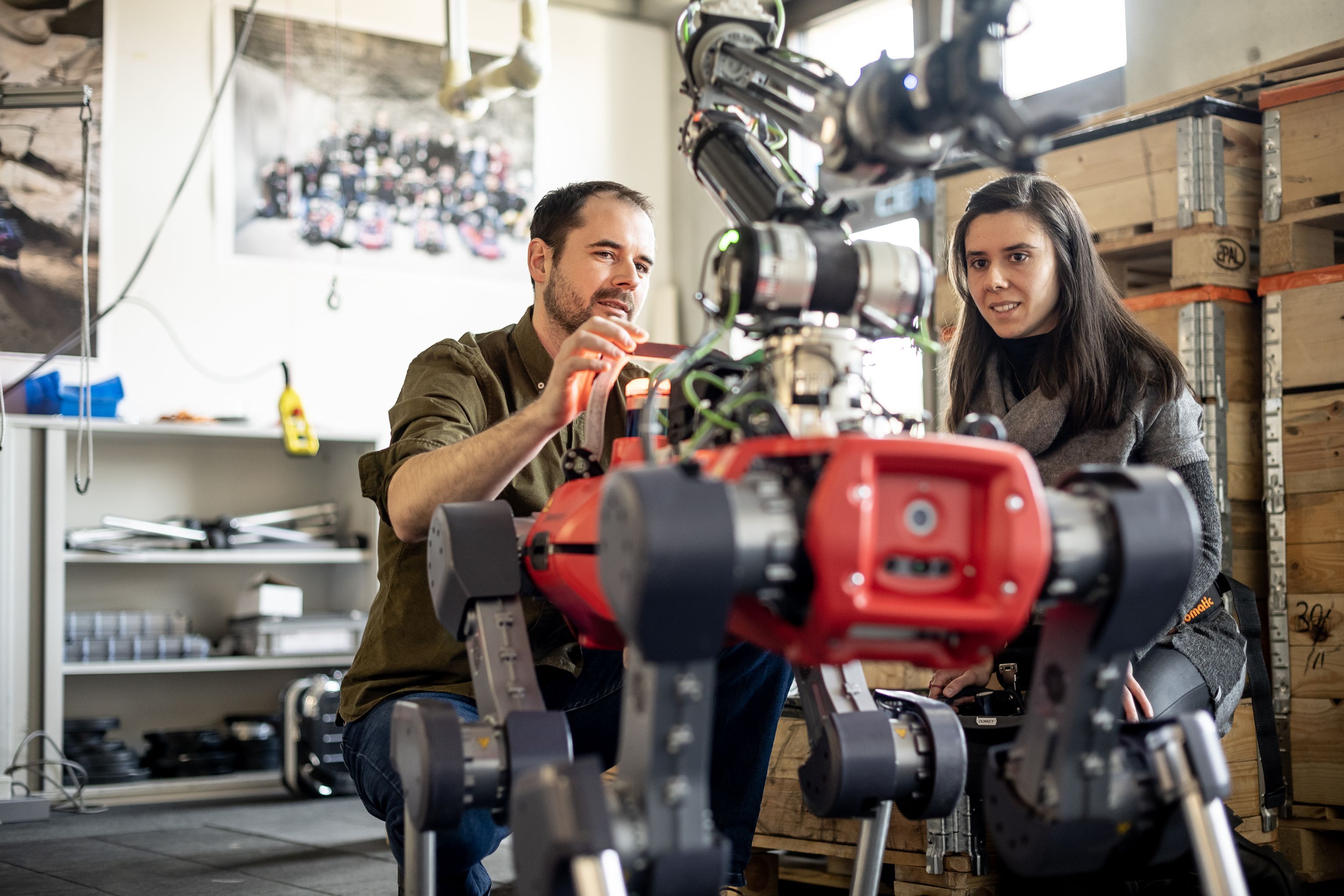26.06.2023
Robotics on the Rise
ETH professor and Principal Investigator of the NCCR Digital Fabrication Marco Hutter knows where the greatest opportunities in robotics lie. The ETH Foundation payed a visit to his lab.
The greater Zurich area, which includes ETH, is often termed the Silicon Valley of robotics. Justifiably so?
MARCO HUTTER – We have indeed made a good name for ourselves. Besides our research, which counts among the world’s finest, many robotics start-ups are located here, and also large companies – especially in the IT sector – that have entered into the robotics field. Switzerland has always been a leader in mechanical engineering and automation, and robotics is nothing other than a continuation along the journey to autonomation.

“Robotics can provide the answer to many of today’s problems,” says Marco Hutter. © ETH Foundation / Daniel Winkler
ETH has set up the RobotX Center to bolster its position in the field of robotics in the coming years. How exactly?
Firstly, by continuing to expand the scope of its research, specifically across disciplines. Secondly, with the support of industry, as many major industries are increasingly realising that robotics can provide the answer to many of today’s problems – from the shortage of skilled workers to sustainability to the scarcity of resources. ABB Schweiz, Hilti and Credit Suisse are already partners and are jointly funding new professorships and projects. Thirdly, by designing programmes in which students not only learn theory but also work hands-on on systems, we want to promote education and training in the field.
Your Robotics Systems Lab generates a large output of start-ups – such as ANYbotics, that’s put the four-legged walking robot ANYmal on the market. How does the ecosystem work?
The start-ups and their outreach make Zurich even more attractive for top students. In terms of what they mean to our lab, they show that our research doesn’t just end up in a paper but achieves an impact that extends much further, and this is incredibly motivating. There’s also a feedback loop between the two parties. For example: ANYbotics robustified the technology that is in ANYmal, and which was first developed here. When I was doing my doctorate, we built the initial prototypes – but they always quickly broke down. Now, thanks to our start-up, ANYmal is a reliably functioning product. The lab can use these robust and mature systems for research missions in difficult terrain and develop new expertise. A key part of the journey was our ETH Pioneer Fellowship grant. This carried us through the time when the technology was insufficiently developed for investors until the company was founded.
In 2021, your team won the DARPA Subterranean Challenge, the biggest robotics competition in the world. What did that mean to you?
It was a fantastic success! Never before had a group with a European lead won a DARPA competition like this. And we used almost only Swiss robotic systems. The win was also a boost for the walking robots field, especially since they’d long been seen as a gimmick.
At the end of last year, ETH announced that the DDPS (Department of Defence, Civil Protection and Sport) was supporting selected robotics projects that could be used in future by rescue and security forces in unarmed missions.
Robotics has a huge amount to offer when it comes to rescue and clean-up operations, such as after a storm or accident. But organisations like the fire services don’t have the money for ten years of robot research. We’re working with the DDPS to test technology with end users, so that they understand what’s available and we understand what’s needed. Every year we go to a training village for a week and test our systems in fields of debris or in buildings with radioactive material. I’m convinced that in just a few years we’ll be able to build effective robots that can be deployed in situations of genuine danger.
This text was written by Isabelle Vloemans and published by ETH Foundation in June 2023. Visit the ETH Foundations website to read the full interview.


